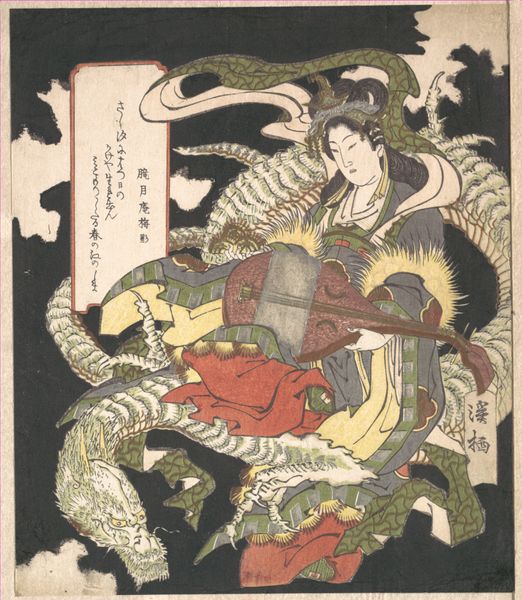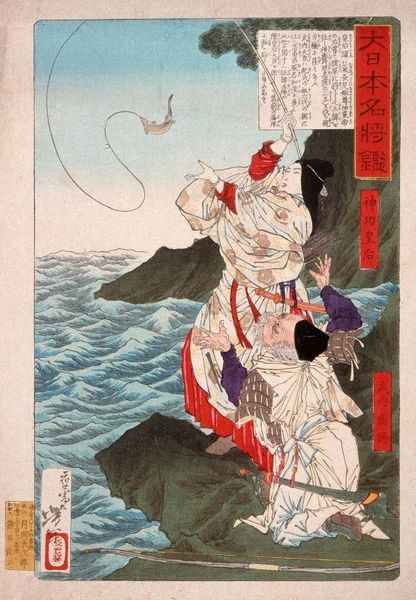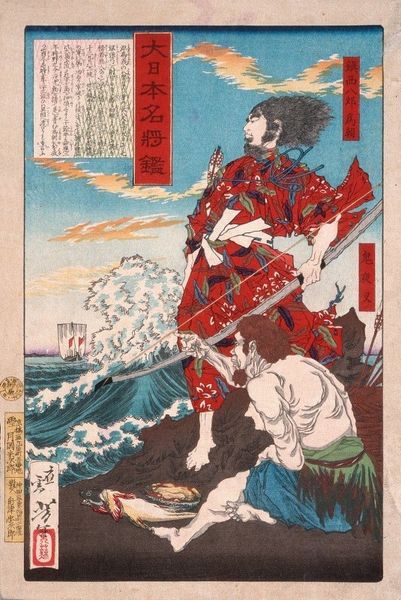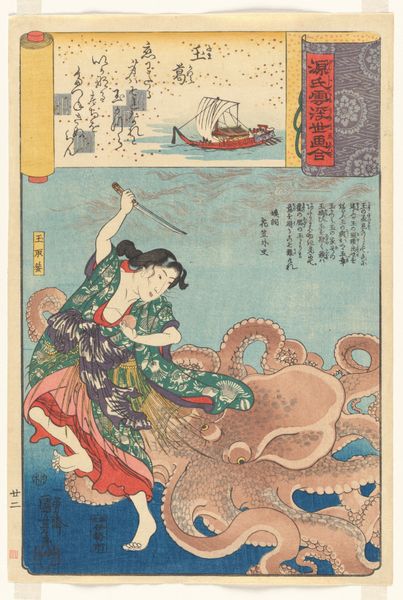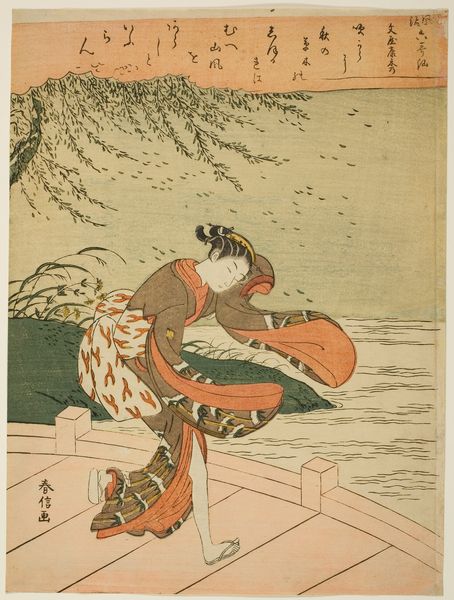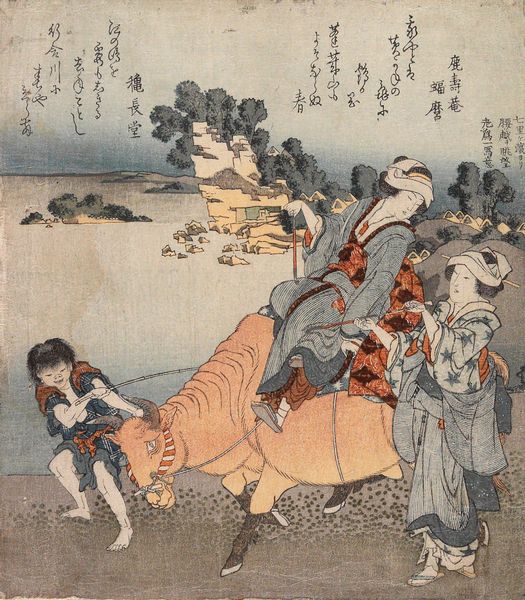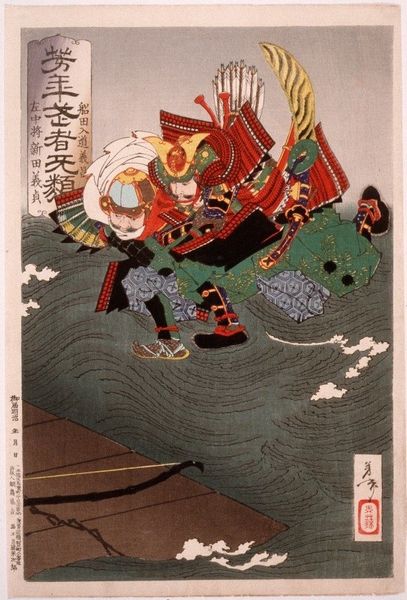
print, woodblock-print
#
portrait
# print
#
ukiyo-e
#
figuration
#
woodblock-print
#
group-portraits
Copyright: Public domain
Utagawa Kunisada made this woodblock print called "The Dragon" in Japan, during the 19th century. It depicts a scene with figures riding a dragon amidst swirling water. Such images were deeply embedded in the cultural and social life of Japan, reflecting a complex interplay of myth, religion, and social hierarchy. Japanese dragons were traditionally associated with water, rainfall, and protection. In this context, Kunisada's dragon might reference folk tales and religious beliefs. These stories served as moral and social instruction, reinforcing cultural values such as courage and wisdom. Woodblock prints like this were not just art objects, but rather served as important tools for cultural transmission. Historical sources, popular literature, and religious texts can provide more context. Investigating the social function of these images gives us a glimpse into the structures of Japanese society and the power of art to reflect, reinforce, and occasionally subvert existing social norms.

